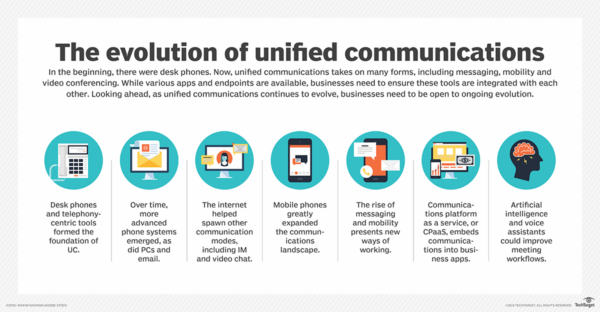Good communication means better business. There are few industries in which the effective sharing of information isn’t crucial. Making communication frictionless and efficient, though, is often easier said than done. Especially if you don’t have the right communications infrastructure to start with.
A business communications infrastructure is the technology that facilitates commercial communication. It can include everything from a simple desk phone, to cold calling software, to smart devices connected to the Internet of Things. Your infrastructure needs to cover your present communication needs and keep you covered for the future.
Research states that 98% of executives consider ineffective communication to be the main cause of failures in business. Companies with unclear or inaccurate business communications are far less productive than those with a proper system set up.
So how can you employ the right systems that are best for your business development? In this post, we’ll explore five principles to help you set up an excellent business communications infrastructure in your company.
1. Know and Assess Your Current Infrastructure
Today, you have a wide range of options for your company’s communications. Data sharing, email management, team collaboration tools, instant messaging, and secure video conferencing are just some examples of what a communications system can comprise.
With so many options now available, it is important to first assess your existing infrastructure. You need to know where you stand, to judge how you can improve. That means looking at the hardware, software and other tech solutions that you’re currently leveraging.
You may, for instance, want to consider the communication channels you currently use. Are you utilizing telephony, email, messaging, and other ways of interacting. If not, why not? If you are, are you getting the most out of them or could migrating to a unified communications (UC) platform help you?
Source: TechTarget
If you are going to make significant changes to your infrastructure, you need to know that your network can cope. You’ll want to study your Wi-Fi, servers, and data connections to help you determine what your company can effectively handle. This will also help you judge what kind of communication system can offer you the best tools for your business.
2. Identify and Set Your Business Communication Goals
Communications infrastructure covers many different channels and functions. To get the most out of any new technology, bring everything back to your business goals.
What do you want your new communications system to achieve?
Does your business connect globally with clients through a video conference app, a prospecting letter or instant messaging? Is your team in need of sharper collaboration tools and file-sharing systems? Is your focus more on streamlining customer interactions or improving communication in-house?
By setting clear targets for your company, you can pinpoint your specific needs. That better positions you to make a more informed choice. Once you know what you need – or even demand – from your communications infrastructure, you can disregard those options that don’t measure up.
If your business is in the customer service field, for instance, your communications requirements will be significant. You’ll be looking to contact center solutions to form the backbone of your infrastructure. It’s those kinds of solutions that help deliver the omnichannel support which modern customers demand. Such multi-faceted support is how to deliver good customer service in an increasingly competitive field.
Your business size and resource capacity also play into setting your company goals. As do any pain points in your company or areas that need improvement. Taking these aspects into account will help you set objectives that are realistic as well as worthwhile.
Once you truly understand what your business needs when it comes to communication infrastructure, you’re one step closer to finding your perfect solutions.
3. Know Who Your Users Are
At this stage, think about who will be using the solutions you implement. This is part and parcel of setting your communication goals. Who are the end users of the platforms and channels you’re going to use? What’s the nature of your target audience if you’re going to be interacting with people outside of your organization?
You might have to consider employees, managers, suppliers, customers, and more. It is essential to study the particular needs of each of these users and align them with your business goals. Find out crucial information like their preferred communication channels and which devices they use these channels on.
Another factor for those with external users is geographical locations. You should consider if you need certain channels or solutions to best reach clients, customers, or others elsewhere in the world. Might you, for instance, benefit from a high-end video conferencing solution? Do customers in certain territories, on the other hand, favor different channels or content types? Do clients prefer to work together live and use collaboration software?
Source: Hubspot
Finding answers to those kinds of questions will help you analyze how you can achieve your users’ needs. That’s alongside the needs of your company and its employees. The goal of any form of communication, after all, is to get across a complete and accurate message. And to ensure that your communication partner understands and is satisfied.
Identifying and getting to know your users will allow you to create a customized communications system. The type of infrastructure that is smart, effective, and will deliver the right information to the right audience.
4. Choose the Right Communications System Provider
You’ve established what you want to achieve and the kinds of features you’ll need. Now dive deep into research online and weigh the pros and cons of all the providers available to you.
Look into the reputation of different providers, and see if the businesses that already use them have similar goals of finding ways on how to stay organized at work and streamline operations. Make sure to ask questions and read company reviews. It just makes sense to use every available resource to find the most beneficial system for you.
The correct hardware or technology alone can’t guarantee you’ll build the ideal infrastructure. You need a strong and reliable relationship with your provider or providers.
At the outset, make sure any service level agreements (SLA) are as you want them. These are the documents that set out the service you’ll get from providers. They also help protect you if suppliers fail to deliver what you expect.
5. Build Your Infrastructure to Last
Finding the right communications system to suit your company’s particular needs is a major investment. That’s why finding one to fulfil your present goals alone is not enough.
Your infrastructure must not only address your business’ current issues, but also be able to respond to any changes you may encounter in the future. You want your infrastructure to adapt or scale along with your company.
When setting up any communications system, think long-term. Consider where you want your firm to be in five or ten years. If you’ve grown or diversified, will your infrastructure need to be overhauled once again. If the answer’s yes, it’s not the right fit for your company. Don’t set yourself up for further expense and hassle down the road.
Having a clear communication strategy for your company is essential. It will help you to build an infrastructure and select a system provider that can each grow and develop with you.
Wrapping Up
An effective communications infrastructure is the foundation onto which you can build your business’s success. One that can scale and meet the changing demands of your business will set you up for sustained growth and the meeting of all long-term goals.
Keep these 5 principles for setting up your infrastructure in mind and you’re half-way there. They’re what will help you build a communications network that will boost your firm across the board. It can improve your productivity, as well as internal and external communication. What’s more, it will ensure to keep your company competitive and innovative.

